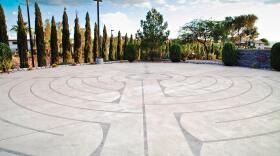If you want to catch the next big 3-D blockbuster, forget the local cineplex. Instead, you might want to enroll in Nevada State College’s Biology 189 course. This year, the class will feature a new learning tool straight out of science fiction: a 3-D imaging system whose rich, floating, interactive holograms will give students an unprecedented look at the building blocks of life.
“It will blow you away,” says Andy Kuniyuki, dean of NSC’s school of liberal arts — and he doesn’t strike you as the kind of guy who drops that phrase often. “But this goes way beyond the ‘wow’ factor. Can you imagine talking about neural circuitry, and have a brain floating in front of you, where you can go in and see how the neurons are attached to various clusters?” Better yet, this technology that calls to mind the Starship Enterprise’s holodeck was developed by a local firm, 360BrandVision. Its President and CEO Ruben Moreno could have probably partnered with any university in the nation, but chose NSC. “They’re small, hungry and growing, and they’ve got a very talented staff,” he syas. “We knew we’d have their full attention, versus going to an institution such as MIT, where we might have been lost in the shuffle.” And no blockbuster fees for students: NSC gets to showcase the tech for free, while 360BrandVision hunts for investors and licensing opportunities inside and outside the classroom.







